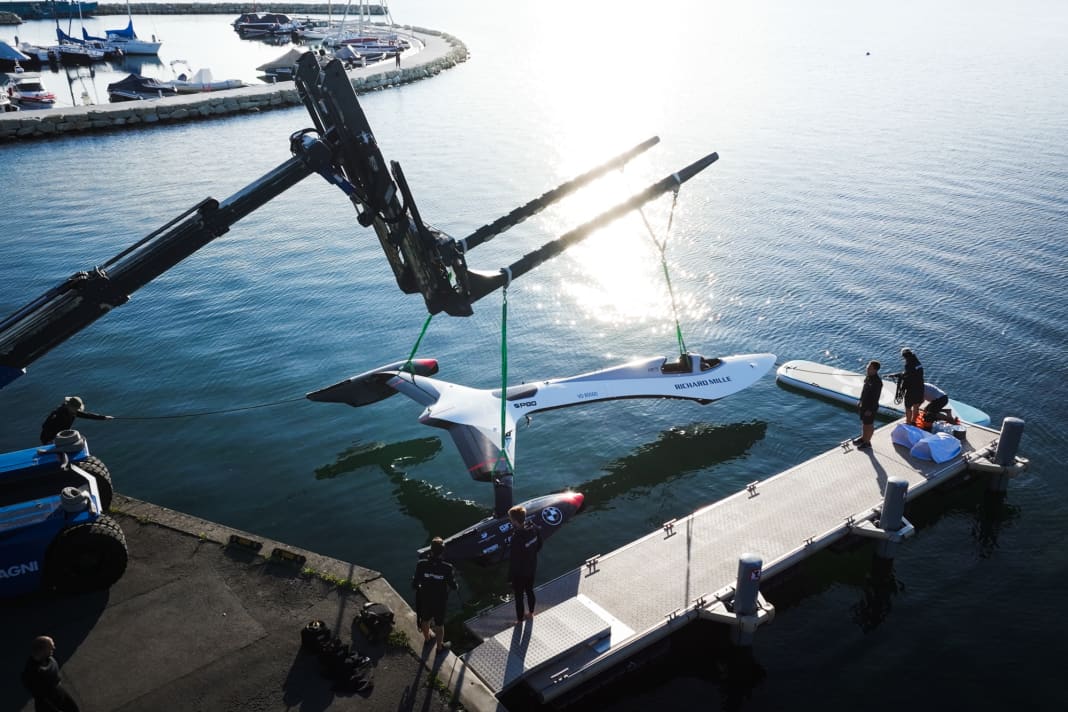





65.45 knots - that has been the benchmark in the world of high-speed sailing for over ten years. The previous record holder, Paul Larsen, and his team took around ten years of development work to break the previous record. And yet a Swiss team now not only wants to set a new record, but has also set itself the goal of beating the old record by a further 15 knots.
An important milestone on this path has already been reached: the Swiss launched their record-breaking "SP80" for the first time at the beginning of August. Initial tests were also carried out on Lake Geneva. As usual with the America's Cup or similar projects, however, not under sail but under tow. "These initial tests have confirmed that the boat can be very fast," says "SP80" CEO and helmsman Mayeul van den Broek.
The founders know each other from university
However, there is still a lot of work to be done before the targeted 80 knots can actually be achieved, he explained with regard to the planned record attempts in the south of France in 2024. "The next few months of optimisation will be crucial if we want to challenge Paul Larsen's record next year." To this end, "SP80" was shipped to the French team base in Leucate after just one week in order to start the test phase under sail.
Like the two co-founders Benoit Gaudiot and Xavier Lepercq, Van den Broek is a former mechanical engineering student at the Swiss Federal Institute of Technology Lausanne (EPFL). The "L'Hydroptère", which held the official world sailing speed record from 2007 to 2012, was also developed there. In addition to partners such as Richard Mille and BMW, the university is also supporting the ambitious project with its infrastructure.
Kite system from "SP80" decisive
The propulsion source used is said to be revolutionary and decisive for the jump in speed. Instead of a normal rig like the record holder "Vestas Sailrocket 2", "SP80" has a kite. In combination with the attachments in the water, this primarily affects the stability of the record-breaking yacht. As a result, "SP80" is also significantly narrower than Paul Larsen's record holder at 7.5 metres wide. Nevertheless, the new Swiss design should be able to be equipped with more than twice as much sail area and be more stable underway.
The hull, which is designed to remain in constant contact with the water at three points and with a main and a rudder foil, looks more like a rocket than a conventional sailing yacht. The "SP80" was manufactured at Persico in Italy. With the planned speeds of around 150 km/h, the protection of the two pilots, who sit one behind the other, is also an important factor. The control pod with the two seats is designed to withstand forces of 50 g and is covered with aramid on the inside to protect the pilots from carbon fibre splinters in the event of a crash. Both pilots sit in bucket seats and are secured with 6-point harnesses and helmets. One person steers the boat using a steering wheel with a central rudder blade, with a crew member sitting behind to control the position of the kite in relation to the wind.
While speed on and in the water was previously limited due to cavitation and high increasing resistance, people have long been travelling in other spheres on land under sail. It was only in April that Emirates Team New Zealand was able to increase the record it set itself in 2022 to over 225 km/h. Here too, however, development is not yet at an end.
